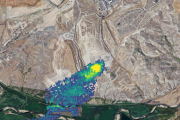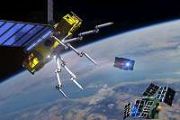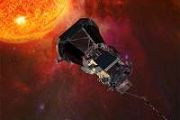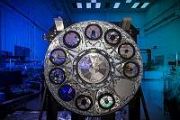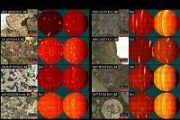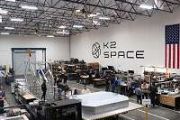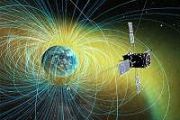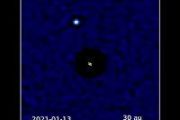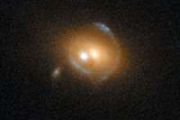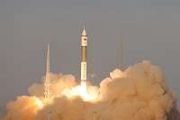
Copernical Team
Researchers ready NASA's SPHEREX space telescope for 2025 launch
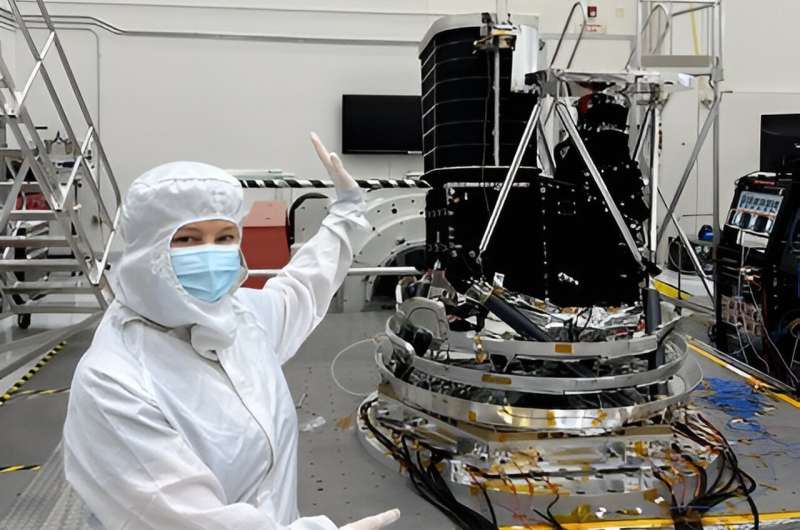
NASA's SPHEREx space telescope has been tucked inside a custom-built chamber on and off for the past two months undergoing tests to prepare it for its two-year mission in space. SPHEREx, which stands for Spectro-Photometer for the History of the universe, Epoch of Reionization and Ices Explorer, is set to launch into orbit around Earth no later than April 2025.
It will map the entire sky in infrared wavelengths of light, capturing not only images of hundreds of millions of stars and galaxies but spectra for these objects as well. Spectra are created by instruments that break apart light into a rainbow of wavelengths, revealing new details about a cosmic object's composition, distance, and more.
Webb finds carbon source on surface of Jupiter’s moon Europa

Jupiter’s moon Europa is one of a handful of worlds in our Solar System that could potentially harbour conditions suitable for life. Previous research has shown that beneath its water-ice crust lies a salty ocean of liquid water with a rocky seafloor. However, planetary scientists had not confirmed whether or not that ocean contained the chemicals needed for life, particularly carbon.
NAVISP Industry Days 2023: register now
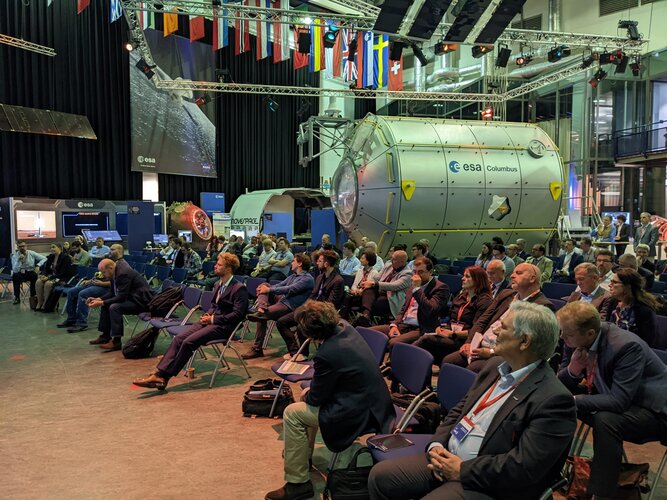
Are you part of the positioning, navigation and timing community and want to play a part in shaping the future of this transformative field? Register now for this year’s NAVISP Industry Days!
Millennium Space Systems' VICTUS NOX space vehicle operational in just 37 hours
 Millennium Space Systems has completed checkout and achieved operational readiness of the VICTUS NOX space vehicle just 37 hours after lunch - 11 hours ahead of the 48-hour goal. This phase of a space mission typically takes weeks or months to complete.
"Conducting space vehicle initialization and achieving mission readiness in record time demonstrates a dramatic shift in the way we delive
Millennium Space Systems has completed checkout and achieved operational readiness of the VICTUS NOX space vehicle just 37 hours after lunch - 11 hours ahead of the 48-hour goal. This phase of a space mission typically takes weeks or months to complete.
"Conducting space vehicle initialization and achieving mission readiness in record time demonstrates a dramatic shift in the way we delive First view of OSIRIS-REx returning with asteroid sample
 Image:
Image:
Is it a spacecraft? An asteroid? Well, both. This small central speck is the first image of a spacecraft on its way home, carrying with it a sample from an asteroid hundreds-of-millions, if-not-billions-of-years old. The spacecraft is NASA’s OSIRIS-REx, the asteroid is Bennu.
On Sunday 24 September, the mission will drop its rocky sample off to fall through Earth’s atmosphere and land safely back home, before it continues on to study the once rather scary asteroid Apophis.
Spotted on 16 September by ESA’s Optical Ground Station
ESA Open Days 2023: connecting space enthusiasts across Europe
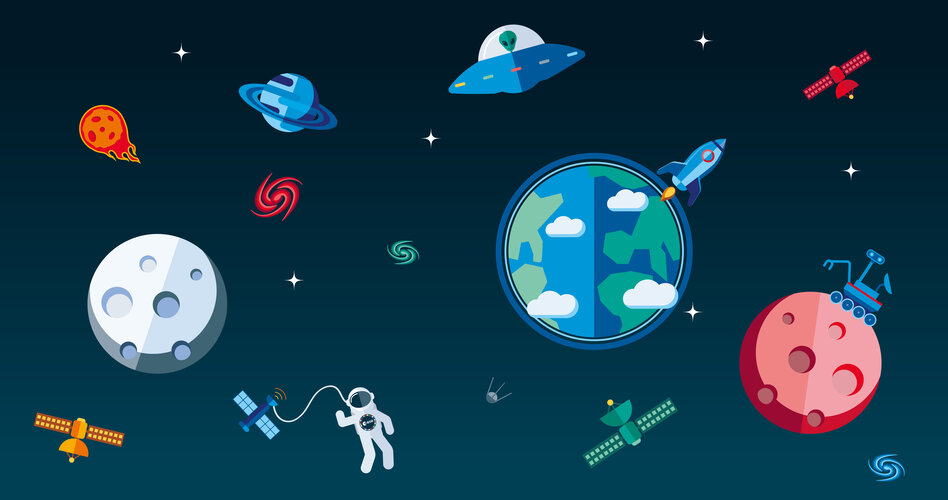
More than 15 000 visitors are getting ready to pass through ESA's gateways during ESA Open Days 2023. This Europe-wide series of events promises to connect space enthusiasts, bringing space closer to them than ever before. Unforgettable days of discoveries, inspiration, and scientific divulgation await thousands of European citizens, who are eagerly gearing up for a fantastic journey through the wonders of space.
ESA works with EU on secure connectivity

Keeping European citizens safe from cyberattacks that can lead to the disruption of essential supplies – such as power, water and the flow of crucial information – is vital in today’s increasingly digital world. ESA and the European Commission have today signed an agreement to use space to help keep information secure.
NASA to live stream asteroid sample's return to Earth this weekend
 NASA has scheduled coverage of its first asteroid sampling mission's return to Earth.
The Origins, Spectral Interpretation, Resource Identification and Security - Regolith Explorer (OSIriS-REx) sample capsule is scheduled to re-enter the atmosphere and return to Earth Sunday, during which it will land in Utah.
"The first asteroid sample collected in space by NASA will arrive on
NASA has scheduled coverage of its first asteroid sampling mission's return to Earth.
The Origins, Spectral Interpretation, Resource Identification and Security - Regolith Explorer (OSIriS-REx) sample capsule is scheduled to re-enter the atmosphere and return to Earth Sunday, during which it will land in Utah.
"The first asteroid sample collected in space by NASA will arrive on Space superiority now and in the future
 In the face of a growing number of threats, the Air and Space Forces need to consider how to maintain Air and Space Superiority with limited manning, capacity and budget.
U.S. Space Force Maj. Gen. Douglas Schiess, Combined Force Space Component Command commander and Space Operations Command vice commander, had an opportunity to address this challenge with General Mark Kelly, Air Combat Co
In the face of a growing number of threats, the Air and Space Forces need to consider how to maintain Air and Space Superiority with limited manning, capacity and budget.
U.S. Space Force Maj. Gen. Douglas Schiess, Combined Force Space Component Command commander and Space Operations Command vice commander, had an opportunity to address this challenge with General Mark Kelly, Air Combat Co Astroscale wins Space Force contract for Space Mobility and Logistics capabilities
 Space Systems Command's Assured Access to Space (AATS) Directorate, in collaboration with the Space Development Corps' Space Enterprise Consortium (SpEC), awarded a $25.5 million contract to Astroscale U.S. Inc. to advance Space Mobility and Logistics (SML) capabilities.
For more than 60 years, satellites' designs and operations have been constrained because they have been required to laun
Space Systems Command's Assured Access to Space (AATS) Directorate, in collaboration with the Space Development Corps' Space Enterprise Consortium (SpEC), awarded a $25.5 million contract to Astroscale U.S. Inc. to advance Space Mobility and Logistics (SML) capabilities.
For more than 60 years, satellites' designs and operations have been constrained because they have been required to laun 









